CLICK TO OPEN

Current Events :












New Delhi, December 11
An Indian Army contingent comprising personnel largely drawn from the Engineers will conduct a 10-day joint military exercise with Vietnam Army at Hanoi.
The India contingent reached Vietnam to take part in the fourth edition of Joint Military Exercise VINBAX-2023, the Ministry of Defence said on Monday.The exercise will be conducted from December 11-21. The Indian contingent comprises 39 personnel from Engineer Regiment of Bengal Engineer Group and six personnel of Army Medical Corps. The Vietnam People’s Army contingent will also be represented by 45 personnel.
Exercise VINBAX was instituted in 2018 and the first edition was conducted at Jabalpur, Madhya Pradesh. It is an annual training event conducted alternatively in India and Vietnam. Last edition was conducted at Chandimandir Military Station in August 2022.
The exercise with focus on deployment and employment of an Engineer Company and a Medical Team.
The joint exercise will jointly rehearse tactics, technique and procedures. Ideas will be exchanged on modern methods to construct roads, culverts, helipads, ammunition shelter and observation posts in operational areas. In addition, rehearsals will be carried out for drills related to combat engineering and combat medical tasks, the MoD said.
The joint exercise will help in promoting understanding and interoperability between the two contingents and further strengthen the defence cooperation between the friendly armies, the MoD said.
CLICK TO OPEN PdF

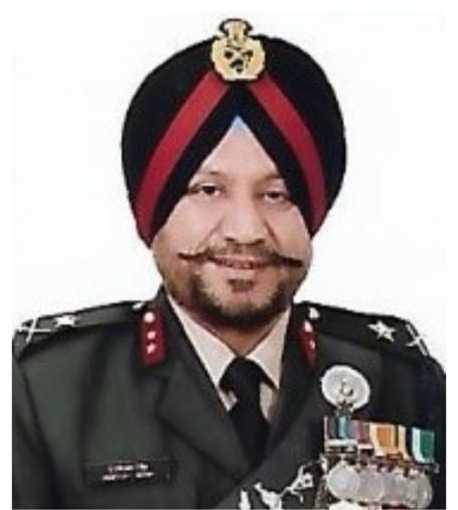
(Maj Gen Harvijay Singh, SM)
Geoeconomics entered the lexicon in 1990 with an article by Edward Luttwak, which argued that following the Cold
War, the importance of military power was giving way to geoeconomic power; how naïve. European politicians
jumped for this juicy ‘Luttwak’ option to score in the ‘Guns vs Butter’ debate. The smug gang was soon downsizing
militaries and gloating on Euros saved.
They then added a new trick – mothballing. Military hardware was packed and sealed for the ‘future’ and military
training moved to simulators in airconditioned environs. Mothballing weapons in active service is simply an illusory
sham because reactivating them takes time and costs money; the Leopard Tanks gifted to Ukraine took months to
break their mothball induced slumber, and inadequate hands-on training of the crew has made them good targets.
America too, riding a high horse against weak oppositions became self-assured over standard conventional weapons.
Encouraged by overwhelming air superiority in Iran and Afghanistan, the US, pushed by boardroom finance wizards,
allowed its Short-Range Air Defence capability to wither to zero. Tactical realities from Ukraine and Gaza woke them
up to the risk posed by cheap weaponized UAVs, rockets and ground skimming Cruise Missiles.
This wakeup call carries cost penalties since manufacturing units have shut shop; a geoeconomics self-goal? Edward
Luttwak’s article beyond adding to the vocabulary has cost the west heavy; evidence aplenty from the Ukraine war.
NATO is now worried that in this race of logistics, key capabilities like ammunition, fuel, and spare parts must reach
Ukraine before Russia seizes initiative post the delayed, failing, failed Ukrainian counter offensive. In the real world
however, such capabilities cannot be created overnight. Those who were once arrogant on security are now singing
a different tune:
European Commission President Ursula von der Leyen suggests that: ammunition production must follow the
pattern undertaken for emergency large-scale production of a COVID vaccine during the pandemic.
A worried US Secretary of State Antony Blinken states: We’re scouring every corner of Earth for appropriate
ammunition for Ukraine. It is not like flipping a light switch. It takes real effort. It takes real-time.
Geoeconomics is however not a complete goner, others have made good use:
• China has been described by experts as world’s leading practitioner of geoeconomics’. China intentionally
lends money for large infrastructure projects in Asia and Africa well aware that the debt could not be repaid,
leaving China with economic and political leverage; predatory lending, and creation of debt traps.
• Russia uses its energy endowment to advance strategic objectives: shutting off gas pipelines to parts of
Europe in the middle of winter. Systematically destroying Ukraine’s energy infrastructure to weaken the
country and make it more dependent for its energy needs; hitting where it hurts.
• Russia has prevented Ukraine from freely exporting its grain, simultaneously increasing its own production to
strip Ukraine of its position as one of the world’s top wheat exporters, constraining its economy and, by
extension, its war-fighting potential; beating the ‘west’ at its own geo economic game of ‘sanctions’.
• US has taken steps to limit the sale of advanced computer chips to China with an aim to contain Beijing’s
technology and military ambitions. In response China has restricted US access to important rare earth
metals; a tit for tat.
While the difference between human lifestyles of today and 100 years ago is remarkable……….The manner in which
we settle our differences and disputes (led by the Global bullies) remains aggressive and primitive ……… Barbarism,
refugees and destruction has not abated in this so-called modern era……….there is enough global evidence.
The world needs to change: time for big global campaigns aimed solely at the G7 is over. Veto by the big 5 at the UN
is archaic, it needs to end. The increased convergence between economics and security is clearly putting pressure on
the laws and institutions that govern the international system. As far as Guns and Butter are concerned, Ukraine is a
live example that Guns make nations strong and Butter fat.
Serving and retired defense personnel often have to go to Delhi for some work or the other. One of the main reasons for this is the treatment of the dependent. Because the two top hospitals of the Armed Forces, Base Hospital and R & R Hospital are located in Delhi only. Whenever defense personnel go to Delhi for the treatment of their dependents, they face a lot of accommodation problems. Either they have to make some arrangement on rent in civil or they have to get attached in a nearby unit.
To overcome this problem of serving and retired soldiers, Taurus Sainik Rest House has been started in August 2022 in front of the base hospital.
Features of Taurus Sainik Rest Home Delhi
This rest house has been built in front of the base hospital so that there is no problem in movement of defense personnel during treatment.
Taurus Sainik Aaram Ghar Delhi has a total of 48 AC rooms and 52 AC single bed dormitories made in which every necessary facility is provided to the defense personnel. These rooms can be booked by serving and retired army personnel and their dependents.
Initially booking can be done for maximum 10 days at Taurus Aaram Ghar Delhi which is called first phase of booking. If required, defense person can book a room or bed in it for a maximum of 5 days. But to book 5 days extra, the defense person will have to show the medical certificate. Defense personnel also have to pay some charges for booking and eating at Taurus Aaram Ghar Delhi, which are as follows.
Taurus Sainik Rest House Delhi Booking Charges and Fees
Booking fees depend on the type of room and dormitory. If defense persons book AC rooms which are total 48 AC rooms then they have to pay Rs 350 per day whereas for single bed dormitory the charges are Rs 125 per day. Apart from this, they also have to pay electric charges which depend on the electric consumption. This payment has to be done before vacating the room
And this payment can also be done through bank transfer, POS machine and UPI app. Apart from this, arrangements have also been made for dining at Taurus Sainik Aaram Ghar Delhi, for which a cafeteria has been made.
In this cafeteria, defense personnel can have three meals a day – breakfast, lunch, dinner and tea for Rs.300.
Accomodation Type No Charges/Day Remarks
AC Room with Double occupancy 48 Rooms Rs 350 + Electric charges
AC Dormitory – Single Bed 52 Beds Rs 125 + Electric charges
Dining Charges – Rs 300 Three meals included
taurus sainik rest house delhi contact number
Army Number – 37844
Civil No. 1 – 8527878080
Civil No. 2 – 01128093233
Email Id – taurussainikaramgrah@gmail.com
taurus sainik rest house delhi address
Taurus Sainik Aramgrah
Opposite Base Hospital Delhi Cantt.
Maude Road, Delhi Cantt.
PIN – 110010
Considering the problems of the defense personnel, the construction of this rest house is a commendable work. Now the defense persons who live far away from Delhi and want to get treatment in Delhi, they can avail this facility. Please share with other veteran groups for their benefit….


Chandigarh: The Indian Air Force (IAF) is likely to imminently rename itself as the Indian Air and Space Force or IASF, in a move that has appalled a cross-section of senior veterans.Chinese Construction of Waterfalls in the building 350, फीट ऊंची इमारत से बह निकला झरना –
00:25 / 03:02UnmuteSettingsFullscreenCopy video urlPlay / PauseMute / UnmuteReport a problemLanguageShareVidverto PlayerA slew of news reports quoting senior IAF officials disclosed on December 11 that this re-christening proposal was at an ‘advanced’ stage with the Ministry of Defence, following Defence Minister Rajnath Singh’s ‘exhortations’ at a routine memorial lecture last year, that the force needed to become an aerospace force to safeguard India from future challenges.
Delivering the 37th Air Chief Marshal P.C. Lal Memorial Lecture at New Delhi in May 2022, Singh had declared that the exploitation of space by India’s adversaries for military use, would have an ‘adverse’ effect and one which the country needed to ‘identify and be fully prepared’ to counter. “As students of military affairs and geopolitics, it is our duty to keep anticipating the nature of future wars,” Singh had stated, adding that space was one area that presented the IAF and the military in general, an impending challenge.
The IAF declined to comment on its planned name change.
A ‘firman’
But official sources in the service said there was a ‘growing need’ for the IAF to ‘take ownership of space’ and declare as much in its identity. They also said that the name-change idea had emanated internally as, in an era of competitive claims, the IAF was anxious to better project its intended enhanced capabilities in the space realm.
The IAFs name change, however, would be its third after its founding in October 1932 by the British Colonial administration in Karachi as an auxiliary force of the Royal Air Force (RAF) with six officers and 19 Havai Sepoys or air soldiers. Thereafter, in recognition of its valiant service in WW2 King George VI conferred on it the prefix Royal” on March 12, 1945, rendering it the RIAF. And, in 1950, when India became a republic, the Royal prefix was dropped and it reverted to being simply the IAF and has continued to be so for nearly four generations since, and to the rest of the world as a formidable, albeit familiar fighting force.
“The IAF’s top brass seem to have taken Singh’s generic observation on the military exploitation of space as a firman (order) from the government and furiously activated the proposal to change its name to include space,” said a three-star IAF veteran. It’s quite amazing the depths the service will plumb in order to ‘please’ the country’s political establishment, he fulminated, declining to be named, as he feared his pension payments would be stopped as ‘punishment’ for airing adverse views.
‘Already an aerospace force’
“The IAF is already an aerospace force, and should continue as the IAF, irrespective of the technological advances it absorbs,” said defence analyst Air Marshal V.K. ‘Jimmy’ Bhatia, one of a handful of India’s military officers who agreed to be identified. But if the government or the IAF, or even both, were hell bent on the renaming it could, at best, be re-baptised as the Indian Aerospace Force, he declared. But to rename it as the IASF would be somewhat excessive and needless, added the IAF’s most decorated fighter pilot.
Without elaborating excessively upon the IAF’s fledgling space-related capabilities, which were proliferating incrementally, numerous other considerations need evaluating with regard to its projected name-change. For, other than its overall futility which, in no way, would be a value-addition to the IAFs present standing or operational capability, was the overall cost entailed in such a makeover endeavour.
And though it was admittedly difficult, if not impossible to assess this – and it was highly unlikely if either the MoD or even the IAF for that matter, had even an approximate expenditure in mind – it’s instructive to defer to South African intellectual property rights lawyer Darren Oliver for this purpose.
This innovative attorney had evolved a calculative method or abacus in 2018, when the ruler of Swaziland decided to rename his country as Eswantini, and estimated that the expense incurred in such an undertaking would approximate over $60 million. Oliver’s involved formula, too convoluted to explicate, gained momentary salience in India recently during the G20 summit in September, when there was talk of renaming the country Bharat.
Costs and ‘mere declaration’
At the time financial analysts had pegged the price of this prospective name-change to Bharat at around Rs 14,304 crore. And whilst the price of renaming the IAF would be nowhere as steep, recasting its propositioned IASF moniker, and possibly even a new ensign to supplant the one unveiled in early October, on hundreds of its platforms, bases and innumerable other assets and properties, would be ‘considerable’ in times of enduring fiscal penury and when frugality and force modernisation was the guiding mantra.
Furthermore, changes in uniform badges and letterheads, in addition to myriad other areas, would only add to the cost of what some veterans called a mere ‘dalliance’ or uncalled-for ‘window-dressing’ that had seemingly become the custom in the armed forces in recent years.
“Merely declaring itself to be a space power does not necessarily make the IAF one,” said a former Ministry of Defence official, also requesting anonymity. It has to significantly prove its credentials, he tersely added.
Other unnamed veterans concurred that the IAF was no commercial enterprise that needed to ‘rebrand’ itself in order to endear itself to its principals or customers. One two-star officer even stated that such ‘marketing gimmicks were best suited to a business and certainly not the military. Another speculated that the IAF’s re-branding could, in future, also result in the other two services seeking a name change as their future operational capabilities burgeoned into newer sphere with advanced in technology. There was no end to such absurdity, he remonstrated.
Successive Air Chief Marshals had, in recent years, stressed the importance of the IAF developing offensive and defensive space capabilities, resulting in the creation of a token tri-service Defence Space Agency (DSA) in 2019 headquartered in Bangalore, that also incorporated within itself the Defence Imagery Processing and Analysis Centre in Delhi and the Defence Satellite Control Centre in Bhopal.
Speaking at a seminar in Delhi earlier this year, Air Chief Marshal V.R. Chaudhuri declared that defence minister Singh had ‘categorically stated’ that it was time for the IAF to become an ‘aerospace power’ And, with ‘on-demand launch’ of satellites and spacecraft by private and military stakeholders becoming the norm, space had emerged as the ‘ultimate high ground’ for the IAF.
Hence, the IAF had opted to take the path of least development via plans to first proclaim itself a space power through a name-change, and then to secure that capability. The IAF appears to be simply playing at being aspiring boastful achievers.1Support The Wire₹2400 onceThe founding premise of The Wire is this: if good journalism is to survive and thrive, it can only do so by being both editorially and financially independent.This means relying principally on contributions from readers and concerned citizens who have no interest other than to sustain a space for quality journalism. For any query or help write to us at support@thewire.in
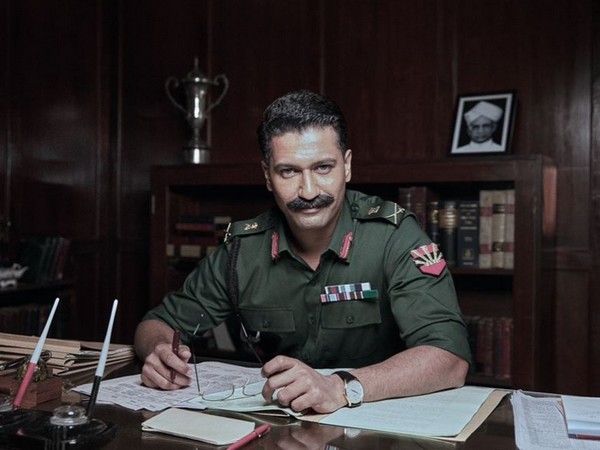
I GOT a chance to meet Milkha Singh when his biopic Bhaag Milkha Bhaag was released a decade ago. I promptly asked him how much time Farhan Akhtar would take to come out of the Milkha mode. His reply was that Farhan would need counselling over the next two years to be ready to work in another movie. This was a compliment for Farhan, who took a lot of time to go through the script and ‘transform’ himself into the great athlete; he also probably took a while to ‘de-role’ himself.
Director Meghna Gulzar picked Vicky Kaushal of Uri: The Surgical Strike fame to portray Sam Manekshaw. The movie, which has been released 50 years after the Field Marshal retired and 15 years after his demise, has attempted to showcase this great son of India as a husband, father, grandfather and a complete soldier.
It must have been a Herculean task to capture on screen the great Sam, who proved himself on many counts — professional knowledge and competence; the ability to take quick decisions as well as ensure justice; an abundance of moral and physical courage; unblemished loyalty to the nation; the will to withstand ill-timed political pressure; and finally, the management of men and resources.
Sam was witty; he could connect with people and touch their hearts too. He treated the soldiers, both his own and those of the enemy, with dignity and respect. He always cared about doing the right thing.
Back in 1994, many years after his retirement, I had the privilege of being his liaison officer for his visit to the Army War College for addressing officers of the elite Higher Command Course. During an informal interaction, he was asked about the ideal role of the Army Chief and the message he had for the young generation. He replied that the role of the Army Chief was to keep the morale of his troops high. The Chief didn’t have to get into the nitty-gritty as he would always have proficient officers beside him. The Chief, according to Sam, needed to act as a truthful interface between the Army and the polity. He said the young generation should keep pace with technological developments and adopt a compassionate approach.
One hopes that Sam Bahadur will be able to inspire the young brigade and make every Indian proud of the legendary Field Marshal. The movie can prove to be motivational for the entire nation if it is screened in schools, colleges, government and corporate offices, professional institutions, the Indian Military Academy, the National Defence Academy and the Lal Bahadur Shastri National Academy of Administration.
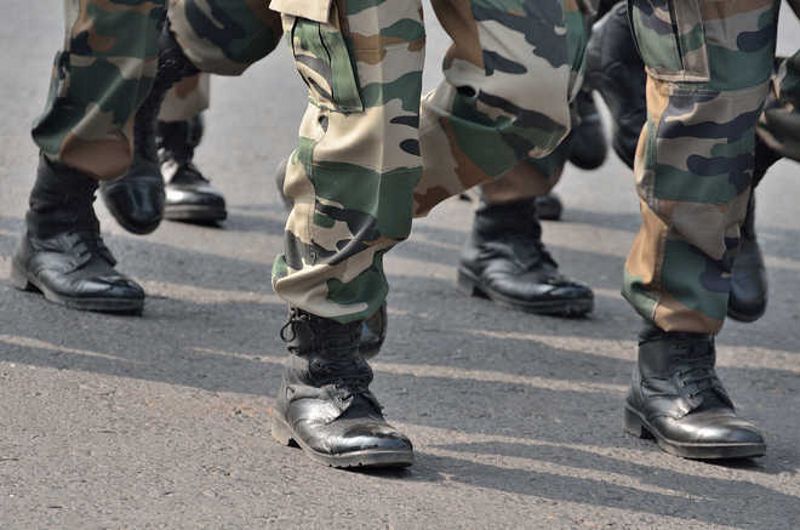
I knew a Calcutta-based retired Major General who saw action during World War II, the India-China war (1962) and the 1965 India-Pakistan war. The veteran soldier chose to stay unmarried; his logic was that he could defeat enemies but would never be able to subdue a nagging wife. ‘At home, even a General is a mere soldier and his wife is the General,’ he would say. Fond of reading and writing, he used to send articles to newspapers.
Once, he sent a piece on his war experiences to a leading English daily. After a fortnight, he received a rejection slip. The Editor regretted not being able to use the article as there was no slot for it in the daily. The war veteran was naturally dejected, but he became furious when he noted that he had been addressed as ‘Dear Major’ instead of ‘Dear Major Gen’. This was really a faux pas on the part of the newspaper. The Major General barged into the office of the newspaper and accosted the Editor. He gave him an earful on Army designations and highlighted the huge difference between a Major and a Major General. The Editor apologised unreservedly and to atone for his gaffe, he said that he would carry the piece in the Sunday supplement. The unsavoury episode ended on a happy note. The Major General continued to write for that newspaper and his pieces were never rejected. Nor did the Editor address him as Major ever again.
It’s no exaggeration that civilians hardly know anything about Army designations and the defence hierarchy. Even some journalists are not aware that Lt General is higher in rank than Major General. The ranks in the Navy and the Air Force are even more perplexing for civilians to understand and memorise.
Dwight David Eisenhower, who served as the US President from 1953 to 1961, was the Supreme Commander of the Allied Expeditionary Force in Europe during World War II; he attained the rank of General. He preferred to be called Gen Eisenhower than ‘Mr President’. When a journalist asked him why, the proud soldier said: ‘Because I earned my ranks by the sweat of my brow.’
Defence officers in India and abroad are justifiably very particular about their ranks and want people to mention their correct designations. And there is nothing wrong with this straightforward insistence. The onus is on us to be careful in this regard. We must not mix up the epaulettes and stars of those who serve the nation with pride and distinction.
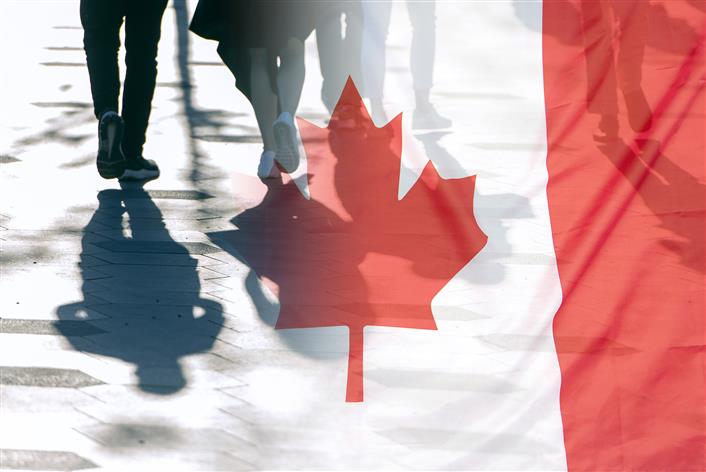
Starting next year, international students applying to study in Canada will need to show that they have access to C$20,635 instead of the requirement of C$10,000 that has been in place for two decades. This is in addition to the cost of travel and tuition. Canada’s rationale is that being transparent about the cost of living and studying would ensure that those who apply are prepared for the economic reality of that country. They would, therefore, be less vulnerable to exploitation by unscrupulous institutions and shady employers. The new financial requirement may lead to fewer applications. It’s a cue for India to focus on providing quality education and offering ample opportunities to students to pursue varied fields of interest.
The lure of permanent residency has led countless families into a debt trap, with youngsters staring at an uncertain future and recruiters as well as fly-by-night educational establishments minting money. Freelance agents continue to operate in an unbridled market in India. Institutions in Canada have been asked to responsibly manage the number of international students they accept, considering their ability to provide housing or assistance in finding off-campus accommodation. The warning to address the fraud and abuse within the system can set the stage for potential visa limitations.
From July to October, the number of applications for new study permits from India dropped to 86,562 from 1,45,881 during the same period last year. The decline is being largely attributed to Indian students taking to social media to highlight the hardships they are facing in Canada. One can only hope that the revision of the cost-of-living threshold would deter many parents from mindlessly sending their children to the Maple Country. The stark contrast between the promise of a rosy future and the reality of students scraping by in exploitative jobs needs to be emphasised.
Manila, December 11
The United States has called out China for interfering in the Philippines’ maritime operations and undermining regional stability, urging Beijing to stop “its dangerous and destabilising conduct” in the South China Sea.
Related News
The Philippines and China have traded accusations over a ramming incident during the weekend while Manila’s vessels were on a resupply mission to Second Thomas Shoal, where its soldiers are stationed.
“Obstructing supply lines to this longstanding outpost and interfering with lawful Philippines maritime operations undermines regional stability,” State Department spokesperson Matthew Miller said in a December 10 statement shared by the US embassy in Manila on Monday.
The United States has called on China to comply with a 2016 arbitral ruling that invalidated its sweeping claims in the South China Sea.
A commentary piece in China’s official military newspaper urged the Philippines to immediately stop its violations, strictly control its provocative actions, and “refrain from shooting itself in the foot”.
It added that “some hegemonic countries” have resorted to “instigating trouble, creating division and inciting confrontation” in the South China Sea, and that those countries “openly endorsed” illegal infringement and provocation by the Philippines.
“It must be pointed out that the Philippines’ actions are closely connected to the instigation and abetment of external forces,” the PLA Daily said, without naming any country or government.
During the weekend, the Chinese coastguard said China would continue to carry out “law-enforcement activities” in its waters.
The United States also reiterated its support for its treaty ally, the Philippines, and reaffirmed its commitment to the mutual defence pact between the two countries.
Philippines President Ferdinand Marcos Jr. separately said that the presence of Chinese coast guard vessels and maritime militia in his country’s waters is illegal and that their actions against Filipinos are outright violations of international law.
The Philippines has further steeled its determination to defend and protect its nation’s sovereign rights in the South China Sea amid “aggression and provocations” by China, Marcos posted on the X social media site late on Sunday.
“We remain undeterred,” the President said.
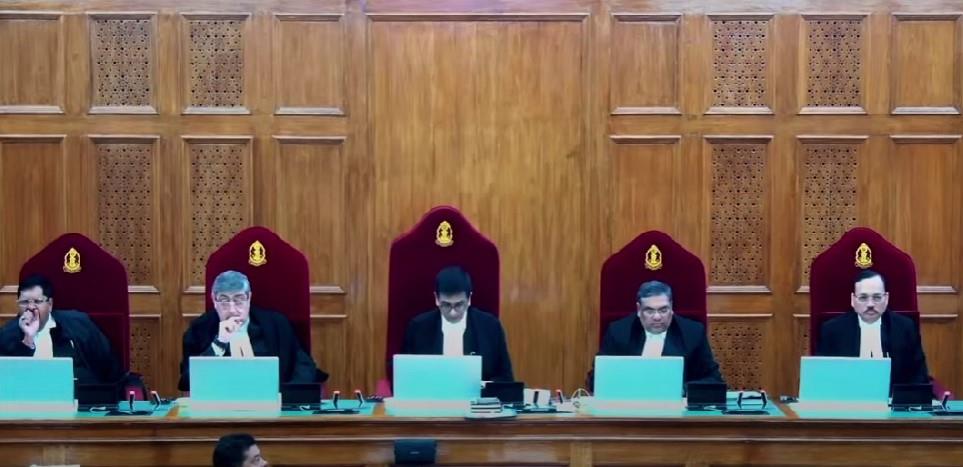
Satya Prakash
New Delhi, December 11
The Supreme Court on Monday upheld the government’s decision to abrogate Article 370, which bestowed special status on the erstwhile state of Jammu and Kashmir, and said steps should be taken to conduct elections in the assembly by September 30 next year.
Related News
Writing the judgement for himself and Justices Gavai and Surya Kant, Chief Justice of India DY Chandrachud said Article 370 of the Constitution was a temporary provision and the President has the power to revoke it.
The apex court also upheld the validity of the decision to carve out the union territory of Ladakh from Jammu and Kashmir in August 2019.
The CJI said there are limitations on powers of Parliament while President’s Rule is in place in a state.
The State of Jammu and Kashmir didn’t retain any element of sovereignty when Maharaja Hari Singh signed an Instrument of Accession with India, ruled the SC Constitution Bench.
Jammu and Kashmir does not hold any internal sovereignty after accession to Union of India, ruled the Bench.
The SC declared that Article 370 was a temporary provision of the Indian Constitution.
The CJI said Article 370 was an interim arrangement due to war conditions in the state.
The SC ruled that Jammu and Kashmir Constituent Assembly was never intended to be a permanent body and its recommendations were not binding on the President.
When the Constituent Assembly of Jammu and Kashmir ceased to exist, the special conditions for which Article 370 was introduced ceased to exist but Article 370 had continued due to the situation in the state, said the CJI.
The CJI said the interpretation clause cannot be modified to amend the Article bypassing the amendment process.
“We have, therefore, held the amendments made to Article 370 by taking recourse to Article 367 as ultra vires,” said the CJI.
The CJI said interpretative clause cannot be used to bypass the specific route for a constitutional amendment. Permitting such amendments by such a surreptitious method would be disastrous.
On validity of J&K Reorganisation Act, 2019, the CJI said Solicitor General Tushar Mehta had submitted that statehood of J&K will be restored and the status of UT was temporary. In view of the submission made by the SG, we don’t find it necessary to determine whether the reorganisation of J&K into UT is valid.
The reorganisation of Ladakh as Union Territory is upheld as Article 3 allows a portion of the state to be made as UT, the CJI said.
The question whether Parliament can convert a state into a Union Territory is left open, the CJI said.
The SC directed the Election Commission to conduct election in J&K by September 2024.
While pronouncing his concurring judgement, Justice SK Kaul recommended setting up of a Truth and Reconciliation Commission to investigate human rights violations by the state and non-state actors in Jammu and Kashmir since the 1980s. However, he said the Commission must not turn into a criminal court and that it should offer a platform for dialogue.
Conclusions of SC verdict on Article 370
*Jammu and Kashmir does not retain any element of sovereignty after the Instrument of Accession was signed by Maharaja Hari Singh on October 26, 1947.
*After the signing of the Instrument of Accession no internal sovereignty was left with Jammu and Kashmir.
*Challenge to the proclamation of President’s Rule in Jammu and Kashmir prior to the constitutional changes is not valid.
*Exercise of power of the President must have a reasonable nexus with the object of President’s Rule.
*Power of Parliament to legislate for a state during President’s Rule cannot exclude law-making powers.
*Article 370 of the Constitution was a temporary and transient provision.
*When Constituent Assembly of Jammu and Kashmir was dissolved, only the transitory power of the assembly ceased to exist and no restriction on Presidential order.
*Para 2 of the Constitution (Application to Jammu and Kashmir) Order, 2019 (OC 272) by which Article 370 was amended by amending article 367 was ultra vires as interpretation clause cannot be used for amendment.
*President use of power was not mala fide and no concurrence needed with state.
*Para 2 of Constitution Order 272 in exercise of power under Article 370(1)(d) applying all provisions of Indian constitution to Jammu and Kashmir declared valid.
*The continuous exercise of power by the President shows the gradual process of integration was ongoing. Thus the Constitution (Application to Jammu and Kashmir) Order, 2019 (CO 273) is valid.
*The Constitution of Jammu and Kashmir is declared to have become redundant.
*Presidential use of power not mala fide.
*The decision to carve out the Union Territory of Ladakh was upheld.
*CJI refers to the Solicitor General’s statement during the hearing that statehood will be restored to Jammu and Kashmir; says statehood should be restored at the earliest.
*SC directs Election Commission to hold polls in Jammu and Kashmir by September 2024.
*Justice SK Kaul recommends setting up of a Truth and Reconciliation Commission to investigate human rights violations by the state and non-state actors in Jammu and Kashmir since the 1980s. However, he says the Commission must not turn into a criminal court and that it should offer a platform for dialogue.

























































